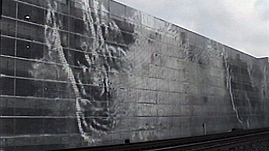Teachers' Domain - Digital Media for the Classroom and Professional Development
User: Preview

Source: SPARK "Collaborations With Nature"



The laws of nature that dictate the invisible forces in our everyday lives may seem complex, but they can be predicted and manipulated. In this video segment from SPARK, you’ll meet Ned Kahn, a scientist and artist who uses wind, water and gravity to create artwork that makes visible the forces of nature.
There are many different forces acting upon our environment that are invisible to the naked eye. However, just because we can’t see these forces at work doesn't’t mean they don’t exist.
The forces around us include gravity, friction and air resistance, to name a few. Sir Isaac Newton defined all of the known forces of nature in the 17th century. He changed our understanding of how the universe works by describing the three laws of motion. Understanding the laws of motion and how forces work in our environment is key to human survival, yet we take them for granted. Think of all of the different kinds of structures that must be able to withstand constant forces and motion, in just the right way, year after year. Earthquake-safe buildings are designed to significantly reduce the tectonic forces that act upon them. Even extreme weather like tornadoes and hurricanes reflect how forces can significantly impact everyday life. From driving a car to exercising, you use these forces in everything you do, usually without really thinking about them.
Wind, which can be an extremely powerful force, is invisible most of the time. You notice it because you can feel it against your skin or see it interact with other objects like the leaves on a tree or dust blown from the ground. Wind is created by high and low variations in pressure in the atmosphere. When these variations in pressure interact, they move the air.
For one scientist and artist, these forces and motions can be so predictable that they can be manipulated to produce amazing works of art. Ned Kahn’s artwork uses the scientific method, momentum and changes in air pressure to detect the forces of nature, stimulate them and make the invisible visible.
For more about the laws that affect motions and forces, check out Newton's Third Law of Motion: Astronauts in Outer Space and Galileo: His Experiments.
 Loading Standards
Loading Standards